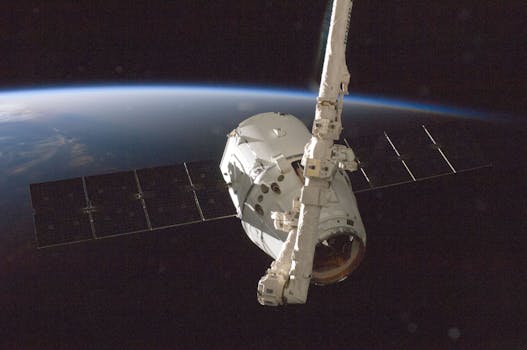
LEO Satellites: Revolutionizing Global Connectivity with WordPress
LEO satellites, or Low Earth Orbit satellites, are a type of satellite that orbits the Earth at an altitude of around 160 to 2,000 kilometers. These satellites have been gaining popularity in recent years due to their ability to provide fast and reliable internet connectivity to remote and underserved areas. With the help of WordPress, LEO satellites are now being used to revolutionize the way we communicate and access information.
What are LEO Satellites?
LEO satellites are a type of satellite that is designed to operate in low Earth orbit. They are typically smaller and less expensive than traditional satellites, which makes them more accessible to a wider range of organizations and individuals. LEO satellites are also more agile and can be launched into orbit more quickly than traditional satellites, which makes them ideal for a variety of applications, including communications, navigation, and Earth observation.
How do LEO Satellites Work?
LEO satellites work by transmitting and receiving data to and from Earth-based stations. They use a variety of frequencies, including Ka-band, Ku-band, and C-band, to communicate with Earth-based stations. LEO satellites are also equipped with advanced technology, such as phased arrays and beam-forming, which allows them to provide high-speed internet connectivity to a wide range of users.
Benefits of LEO Satellites
LEO satellites have a number of benefits, including their ability to provide fast and reliable internet connectivity to remote and underserved areas. They are also more cost-effective than traditional satellites, which makes them more accessible to a wider range of organizations and individuals. Additionally, LEO satellites are more agile and can be launched into orbit more quickly than traditional satellites, which makes them ideal for a variety of applications, including communications, navigation, and Earth observation.
WordPress and LEO Satellites
WordPress is playing a key role in the development and deployment of LEO satellites. Many organizations that are involved in the development and deployment of LEO satellites are using WordPress to build their websites and manage their online presence. WordPress is also being used to develop custom applications and plugins that are designed to work with LEO satellites, such as plugins that provide real-time tracking and monitoring of satellite data.
Conclusion
In conclusion, LEO satellites are revolutionizing the way we communicate and access information. With their ability to provide fast and reliable internet connectivity to remote and underserved areas, they are ideal for a variety of applications, including communications, navigation, and Earth observation. WordPress is playing a key role in the development and deployment of LEO satellites, and is being used to build custom applications and plugins that are designed to work with these satellites.
Future of LEO Satellites
The future of LEO satellites is bright, with many organizations and individuals investing in the development and deployment of these satellites. As the technology continues to evolve, we can expect to see even more advanced and capable LEO satellites that are able to provide even faster and more reliable internet connectivity to a wider range of users. With the help of WordPress, the possibilities for LEO satellites are endless, and we can expect to see many exciting developments in the years to come.
Challenges and Limitations
While LEO satellites have the potential to revolutionize the way we communicate and access information, there are also some challenges and limitations that need to be addressed. One of the main challenges is the issue of interference, which can occur when multiple satellites are operating in the same frequency range. Additionally, LEO satellites are also subject to the limitations of their orbit, which can affect their ability to provide continuous coverage and connectivity.
Real-World Applications
LEO satellites have a wide range of real-world applications, including communications, navigation, and Earth observation. They are being used by a variety of organizations, including governments, businesses, and non-profits, to provide internet connectivity to remote and underserved areas. They are also being used to track and monitor environmental changes, such as deforestation and climate change, and to provide early warning systems for natural disasters such as hurricanes and wildfires.



